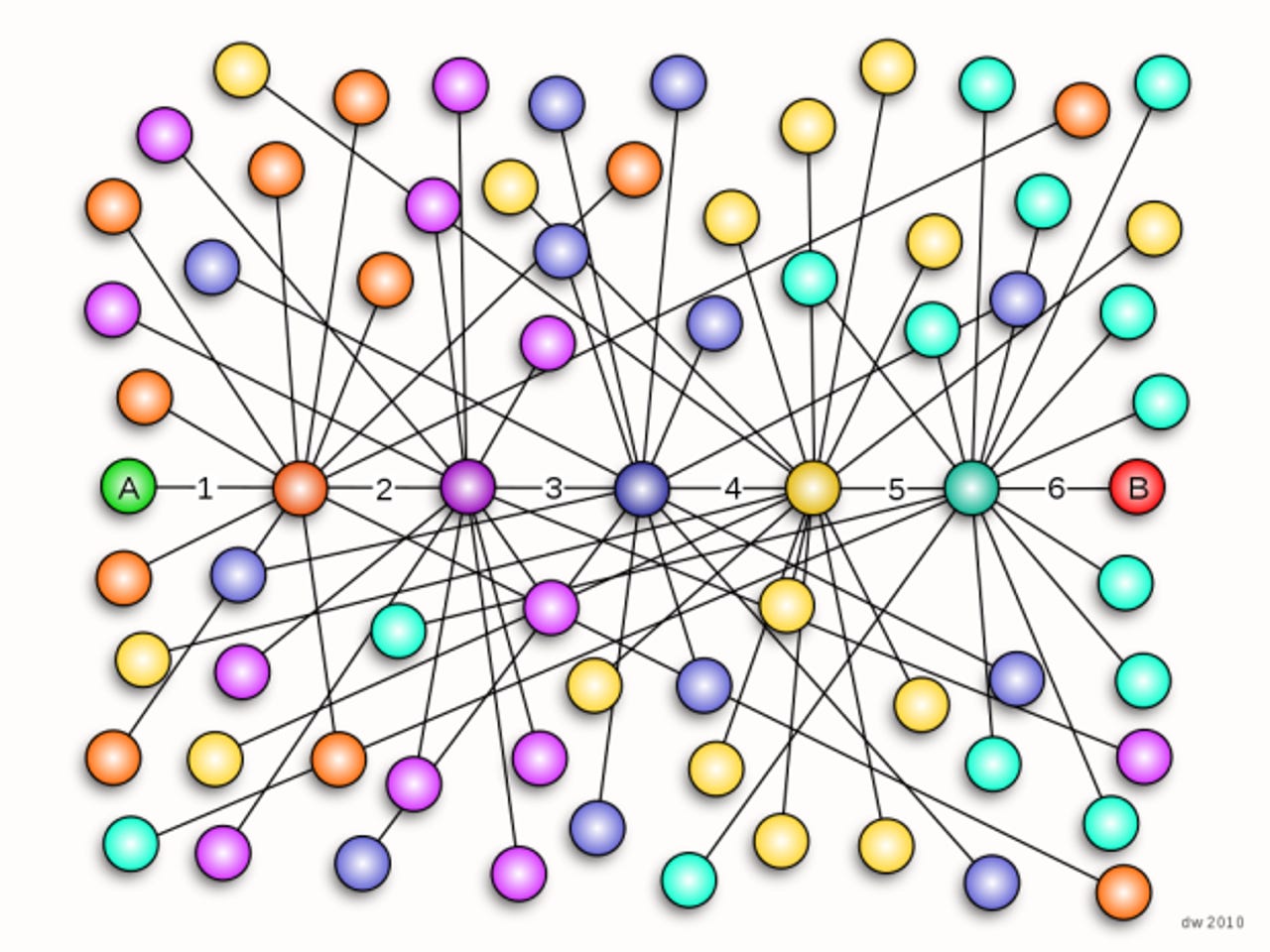Yahoo, Facebook test "six degrees of separation" idea

Yahoo has partnered with Facebook to test the iconic social experiment known as "six degrees of separation" (for those interested, the history lesson is at the end). The goal of the Small World Experiment is to determine the social path length between two strangers by tapping into the world's largest social network and its 750 million users, each of whom have an average of 130 friends.
Anyone with a Facebook account can participate to verify if everyone is on average approximately six steps away from any other person on Earth. You'll be asked to select one of your Facebook friends whom you believe is most likely to know the "target person" that has been assigned to you. A message will then be sent from friend to friend until you get it to the "target person." The goal is to do this in as few steps as possible. Here's the official description:
The Small World Experiment is designed to test the hypothesis that anyone in the world can get a message to anyone else in just "six degrees of separation" by passing it from friend to friend. Sociologists have tried to prove (or disprove) this claim for decades, but it is still unresolved.
Now, using Facebook we finally have the technology to put the hypothesis to a proper scientific test. By participating in this experiment, you'll not only get to see how you're connected to people you might never otherwise encounter, you will also be helping to advance the science of social networks.
Yahoo and Facebook hope to attract many times more participants than has ever been attempted before. The study is intended as academic social research and will be published in a peer-reviewed scientific journal.
"You really couldn't have done this until very recently," Duncan Watts, Yahoo's principal research scientist who is leading the experiment, told Mercury News. "It's a milestone, in terms of it's the kind of research question you can answer now that you could have imagined 50 years ago but that you couldn't have answered 50 years ago -- or even 15 years ago."
"Facebook depends on its connectedness, and the fact that users are connected to each other and users are connected to brands, enables the diffusion of important messages, a big part of which is our advertising platform," Cameron Marlow, Facebook's chief data scientist, told the publication. "This is our best chance to measure this fundamental piece of the social graph, so the more users that participate, the clearer the signal will be."
In 1929, Hungarian author Frigyes Karinthy published a volume of short stories titled "Everything is Different." One such story was called "Chains" or "Chain-Links" (depending on the translation) and investigated many of the problems in the field we now call network theory. Karinthy's piece suggested that due to technological advances in communications and travel, the modern world was "shrinking" because growth in the density of friendship networks was offsetting the growth in physical distances between human beings.
As a result of this hypothesis, Karinthy's characters believed that any two individuals could be connected through at most five acquaintances. In the years to come, mathematicians, sociologists, and physicists questioned its validity.
In 1967, Harvard sociologist Stanley Milgram sent roughly 300 letters to randomly selected people in Omaha, Nebraska with the instruction to get the letter to a single "target" individual – a stockbroker in Boston. Milgram told them his name, address, and occupation, so that they could send the letter to someone they knew who they thought would be "closer" to the target than they. Just 64 letters reached the target, and Milgram found that people in the US seemed to be connected by approximately three friendship links on average, but he did not speculate on global linkages.
This, and similar other experiments conducted by Milgram were made popular an article titled "Small World Problem" published in the science journal Psychology Today. As for the actual "six degrees of separation" term, American playwright John Guare wrote a play in 1990 and later released a film in 1993 that popularized it.
Other researchers conducted several experiments to examine the average path length for social networks of people, mainly focused on the US. It is now generally accepted that there were potential flaws in these attempts because the conclusions were based on relatively small number of research samples.
Will Yahoo and Facebook be able to help prove or disprove the "six degrees of separation" idea? I'll keep an eye out for when the results start trickling in.
